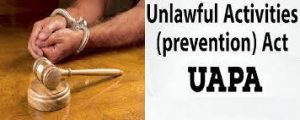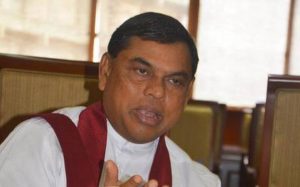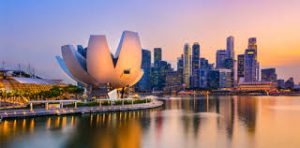Today Current Affairs: 4th December 2021 for UPSC IAS exams, State PSC exams, SSC CGL, State SSC, RRB, Railways, Banking Exam & IBPS, etc
Table of Contents
Dam Safety Bill (2019):

The Rajya Sabha passed the landmark Dam Safety Bill (2019), paving the way for enactment of the Dam Safety Act in the country.
- The Dam Safety Bill (2019) was passed by the Lok Sabha on 2nd August 2019
- The Bill provides for the surveillance, inspection, operation, and maintenance of all specified dams across the country. These are dams with height more than 15 metres, or height between 10 metres to 15 metres with certain design and structural conditions.
- It constitutes two national bodies:
- the National Committee on Dam Safety, whose functions include evolving policies and recommending regulations regarding dam safety standards; and
- the National Dam Safety Authority, whose functions include implementing policies of the National Committee, providing technical assistance to State Dam Safety Organisations (SDSOs), and resolving matters between SDSOs of states or between a SDSO and any dam owner in that state.
- It also constitutes two state bodies: State Committee on Dam Safety, and State Dam Safety Organisation. These bodies will be responsible for the surveillance, inspection, and monitoring the operation and maintenance of dams within their jurisdiction.
- Functions of the national bodies and the State Committees on Dam Safety have been provided in Schedules to the Bill.
- These Schedules can be amended by a government notification.
- An offence under the Bill can lead to imprisonment of up to two years, or a fine, or both.
Paika Rebellion:

The 1817 Paika rebellion of Odisha could not be called the first war of Independence, but considering it as a beginning of a popular uprising against the British, it would be included as a case study in the Class 8 National Council of Educational Research and Training (NCERT) history textbook, the Union Culture Minister.
- The Culture Ministry had received a reference from the Odisha Chief Minister asking that the Paika rebellion be declared the first war of Independence.
- The minister said the matter was examined in consultation with the Indian Council of Historical Research, under the Union Education Ministry, and according to the comments by the Indian Council of Historical Research, the Paika rebellion could not be called the first war of Independence.
- However, from a historical point of view, it can be said that the ‘Paika Bidroha’, which was set off in March 1817 and continued until May 1825, had set an example for the classes as well as the masses in India to follow later on.
- Accordingly, considering that this is one of the beginnings of popular uprisings against the British in India, it has been decided to include it as a ‘case-study’ in the Class VIII history textbook of NCERT.
Unlawful Activities (Prevention) Act:

Putting a person accused under the Unlawful Activities (Prevention) Act behind bars for an unduly long time with no progress in the trial or appeal process is a violation of his or her fundamental right and a threat to public confidence in the administration of justice, the Supreme Court has held in a judgment.
Key highlights of the judgement:
- While deprivation of personal liberty for some period may not be avoidable, the period of deprivation pending trial/appeal cannot be unduly long.
- At the same time, timely delivery of justice is part of human rights and denial of speedy justice is a threat to public confidence in the administration of justice.
- Once it is known that a timely trial is not possible and the accused has already suffered a significant period of incarceration, the courts are “obligated” to enlarge an undertrial on bail.
- The court noted that cases investigated by the National Investigation Agency should be tried on a day-to-day basis and have priority over other cases.
Smart Cities Mission (SCM):

The deadline for completing projects under the Smart Cities Mission (SCM) has been extended for all 100 participating cities to June 2023 due to the delays caused by COVID-19 and based on a NITI Aayog recommendation in August.
Smart Cities mission:
- GoI launched the smart cities mission in 2015.
- The cities were given five years to complete the projects under the mission, with the first set of Smart Cities expected to complete in 2021.
- The objective is to integrate city functions, utilize scarce resources more efficiently, and improve the quality of life of citizens.
- It is an innovative initiative under the Ministry of Housing and Urban Affairs.
- It is a Centrally Sponsored Scheme.
Smart city is envisaged to have four pillars:
- Social Infrastructure.
- Physical Infrastructure.
- Institutional Infrastructure (including Governance).
- Economic Infrastructure.
Of the total proposed projects under this mission, 5,924 projects have been tendered, work orders have been issued for 5,236 and 2,665 projects are fully operational.
- 212 PPP projects worth Rs. 24,964 crore have been grounded/completed
- 70 Smart cities have developed. operationalized their Integrated Command and Control Centres (ICCCs) in the country.
The Negative Imports List For Defence:

The Government has brought in few changes in its negative imports list policy.
This includes:
- The armed forces will now be able to import defence equipment in certain circumstances even if it figures in the negative import list.
- This includes scenarios where there is an “immediate requirement” that domestic industry cannot cater to, or if the safety of soldiers is at stake due to inadequacies in an indigenous product.
- There is also a provision now to review or remove items mentioned in the negative import list, which was first formulated in August 2020.
Negative imports list policy/positive indigenisation list Introduced in August 2020, the negative list essentially means that the Armed Forces—Army, Navy and Air Force—will only procure such items from domestic manufacturers.
- The manufacturers could be private sector players or Defence Public Sector Undertakings (DPSUs).
- As per Stockholm International Peace Research Institute, India has been the second largest importer between 2014 and 2019 with US$ 16.75 billion worth of imports during this period.
- The government wants to reduce the dependence on imported items in defence and give a shot in the arm to the domestic defence manufacturing industry.
- By denying the possibility of importing the items on the negative list, the domestic industry is given the opportunity to step up and manufacture them for the needs of the forces.
2nd list:
- The Defence Ministry notified the second negative import list, in May 2021, of 108 items that can now be only purchased from indigenous sources.
- The new list takes the total number on the list to 209.
- The list comprises complex systems, sensors, simulator, weapons and ammunitions like helicopters, next generation corvettes, Air Borne Early Warning and Control (AEW&C) systems, tank engines.
Hypersonic Weapons:

US has said that China’s pursuit of hypersonic weapons “increases tensions in the region” and vowed the U.S. would maintain its capability to deter potential threats posed by China.
- China’s growing military muscle and its drive to end American predominance in Asia has triggered unease in Washington.
- China’s efforts to accelerate its military capabilities were highlighted by its July test of a hypersonic weapon capable of partially orbiting the Earth before reentering the atmosphere and gliding on a maneuverable path to its target.
- Experts say the weapons system is clearly designed with a purpose of evading U.S. missile defences, although China insisted it was testing a reusable space vehicle, not a missile.
- Hypersonic speeds are 5 or more times the speed of sound
- The weapon could, in theory, fly over the South Pole. That would pose a big challenge for the US military because its missile defence systems are focused on the northern polar route.
- India is especially concerned with the latest developments considering relations with China in the recent past. Such capabilities highlight the threat for our space assets along with the surface assets.
- The exact details on technology used by China in this particular test are not known through media sources. But most of the hypersonic vehicles primarily use the scramjet technology.
Scramjet technology:
- Scramjets are a category of engines designed to handle airflows of speeds in multiples of the speed of sound.
- In an air-breathing scramjet engine, air from the atmosphere is rammed into the engine’s combustion chamber at a supersonic speed of more than Mach two.
- In the chamber, the air mixes with the fuel to ignite a supersonic combustion but the cruiser’s flight will be at a hypersonic speed of Mach six to seven.
- So it is called supersonic combustion ramjet or Scramjet.
Office Of The High Commissioner Of Human Rights:

The Office of the High Commissioner for Human Rights, also known as, the Office of the UN High Commissioner for Human Rights, is one of the UN human rights bodies.
- The OHCHR is entrusted by the United Nations General Assembly (UNGA) with the mandate to protect and promote all human rights for everyone all over the world.
- It offers technical expertise and capacity-development to aid the implementation of global human rights standards on the field.
- It is a part of the UN Secretariat and was established in 1993.
- It is headquartered in Geneva and has many regional offices as well.
- The OHCHR is headed by the High Commissioner for Human Rights.
- OHCHR Funding: Almost 2/3rd of the funding for the Office comes from voluntary contributions from donors and member states.
- The rest is covered by the general budget of the UN.
Four Pronged Strategy On Srilanka Crisis:

India and Sri Lanka agreed to a four-pronged approach to discuss initiatives on food and energy security to help mitigate Sri Lanka’s economic crisis, during a two-day visit by Sri Lankan Finance Minister Basil Rajapaksa to New Delhi.
- The decisions included a four-pillar initiative, comprising
- lines of credit for food, medicines and fuel purchases granted by India,
- a currency swap agreement to deal with Sri lanka’s balance of payment issues,
- an “early” modernisation project of the Trinco oil farms that India has been pursuing for several years, and
- a Sri Lankan commitment to facilitate Indian investments in various sectors.
- It was agreed that modalities to realise these objectives would be finalised early, within a mutually agreed timeline.
- Jaishankar will meet Sri Lankan President Gotabaya Rajapaksa on Saturday in Abu Dhabi when they will inaugurate the Indian Ocean Region Conference organised by the India Foundation.
- India and Sri Lanka have had a number of differences on economic issues in the past two years, particularly over the perception that the Rajapaksa Government has favoured Chinese companies on projects that it expedites.
- Matters came to a head this year after President Gotabaya cancelled an MoU signed with India and Japan for the East Coast Terminal project.
- India protested the cancellation though it later agreed to the West Coast Terminal being developed by the Adani group.
Perform, Achieve And Trade Scheme:

A recent report released by the Centre for Science and Environment (CSE) mentions that the Perform, Achieve and Trade (PAT) scheme introduced in 2008 is not effective.
- The PAT scheme was introduced to improve energy efficiency in Indian industries and consequently reduce greenhouse gas.
- The report attributed the inefficiency of the scheme to non-transparency, unfastened targets and neglected deadlines.
- It is a market-based mechanism to further accelerate as well as incentivize energy efficiency in the large energy-intensive industries.
- The Energy Savings Certificates (ESCerts) were introduced in India in 2011 under the PAT by the Bureau of Energy Efficiency (BEE) under the National Mission of Energy Efficiency.
- NMEEE is one of the eight national missions under the National Action Plan on Climate Change (NAPCC) launched by the Government of India in the year 2008.
Energy Savings Certificates (ESCerts):
- This market- based mechanism is facilitated through the trading of Energy Savings Certificates (ESCerts) which are issued to those plants who have overachieved their targets.
- The underachievers are entitled to purchase ESCerts through two power exchanges – Indian Energy Exchange (IEX) and Power Exchange India Limited (PXIL).
- Industries that take part in this scheme are referred to as designated shoppers (DC).
- Sectors Covered:
- PAT covered about 13 energy-intensive sectors: Thermal power plants (TPP), cement, aluminium, iron and steel, pulp and paper, fertiliser, chlor-alkali, petroleum refineries, petrochemicals, distribution companies, railways, textile and commercial buildings (hotels and airports).
PM MITRA Parks:

The Government has approved setting up of 7 PM Mega Integrated Textile Region and Apparel (PM MITRA) Parks in Greenfield/Brownfield sites with an outlay of Rs. 4445 cr for a period of seven years upto 2027-28.
- Government of India is implementing the Scheme for Integrated Textile Park (SITP) which provides support for creation of world-class infrastructure facilities for setting up of textile units.
- It park will be developed by a Special Purpose Vehicle which will be owned by the Central and State Government and in a Public Private Partnership (PPP) Mode.
- Each Park will have an incubation centre, common processing house and a common effluent treatment plant and other textile related facilities such as design centres and testing centres.
- Incubation centre is the institution that assists entrepreneurs in developing their business and solving problems associated with it, especially in the initial stages, by providing an array of business and technical services, initial seed funds, lab facilities, advisory, network and linkages.
- The Master Developer will not only develop the Industrial Park but also maintain it during the concession period.
- Funding:
- The centre will provide development capital support for the development of common infrastructure of Rs 500 crore for each greenfield MITRA park and upto Rs 200 crore for each brownfield park.
- Greenfield describes a completely new project that has to be executed from scratch, while a brownfield project is one that has been worked on by others.
- Eligibility for Incentives:
- An additional Rs 300 crore will be provided as Competitiveness Incentive Support for the early establishment of textiles manufacturing units in each of these parks.
- Investors who set up “anchor plants” that employ at least 100 people will be eligible for incentives of upto Rs 10 crore every year for upto three years.
Worldwide Cost Of Living Report:

The Worldwide Cost of Living report has been released highlighting that Tel Aviv (Israel’s capital) is the world’s most expensive city to live in. .
- The report is compiled by the Economist Intelligence Unit (EIU). It compares the cost of living indices in different cities.
- Most Expensive City: The Israeli city of Tel Aviv topped the rankings for the first time, overtaking last year’s leader Paris, which is now at second place along with Singapore.
- Paris and Singapore came joint second, followed by Zurich and Hong Kong. New York was in sixth, with Geneva in seventh.
- The index is benchmarked against prices in New York City, hence cities with currencies that are stronger against the US dollar are likely to appear higher in the rankings.
- The 2021 Worldwide Cost of Living index tracks the cost of living across 173 global cities and compares the price of more than 200 everyday products and services.
- Impact of Covid-19: Supply-chain blockages and changing consumer demand have pushed up the cost of living in many of the biggest cities. Moreover, inflation is the fastest recorded over the past five years.
- Indian Scenario: In India, Ahmedabad, Gujarat has been listed in the top ten cheapest cities of the survey.
- Among the cheapest cities, Damascus (capital of Syria) is at the top. It is followed by Tripoli (Libya,) Tashkent (Uzbekistan), Tunis (Tunisia) and Almaty (Kazakhstan’) in the ranking of cheapest cities.
Kyhytysuka Sachicarum:

An international team of researchers has discovered a new marine reptile named Kyhytysuka sachicarum.
- Kyhytysuka translates to ‘the one that cuts with something sharp’ in an indigenous language from the region in central Colombia where the fossil was found.
- It has been named so to honour the ancient Muisca culture that existed there for millennia.
- The fossil is a stunningly preserved meter-long skull, is one of the last surviving ichthyosaurs – ancient animals that look eerily like living swordfish.
Ichthyosaur:
- They are the members of an extinct group of aquatic reptiles, most of which were very similar to porpoises in appearance and habits.
- They had a very wide geographic distribution, and their fossil remains span almost the entire Mesozoic Era.
- They are first known from the Triassic Period of Asia, where they began as long-bodied, undulating swimmers without many of the specializations seen in later species.
- The species comes from an important transitional time during the Early Cretaceous period when the Earth was coming out of a relatively cool period, had rising sea levels, and the supercontinent Pangea ( A supercontinent that incorporated almost all the landmasses on Earth) was splitting into northern and southern landmasses.




